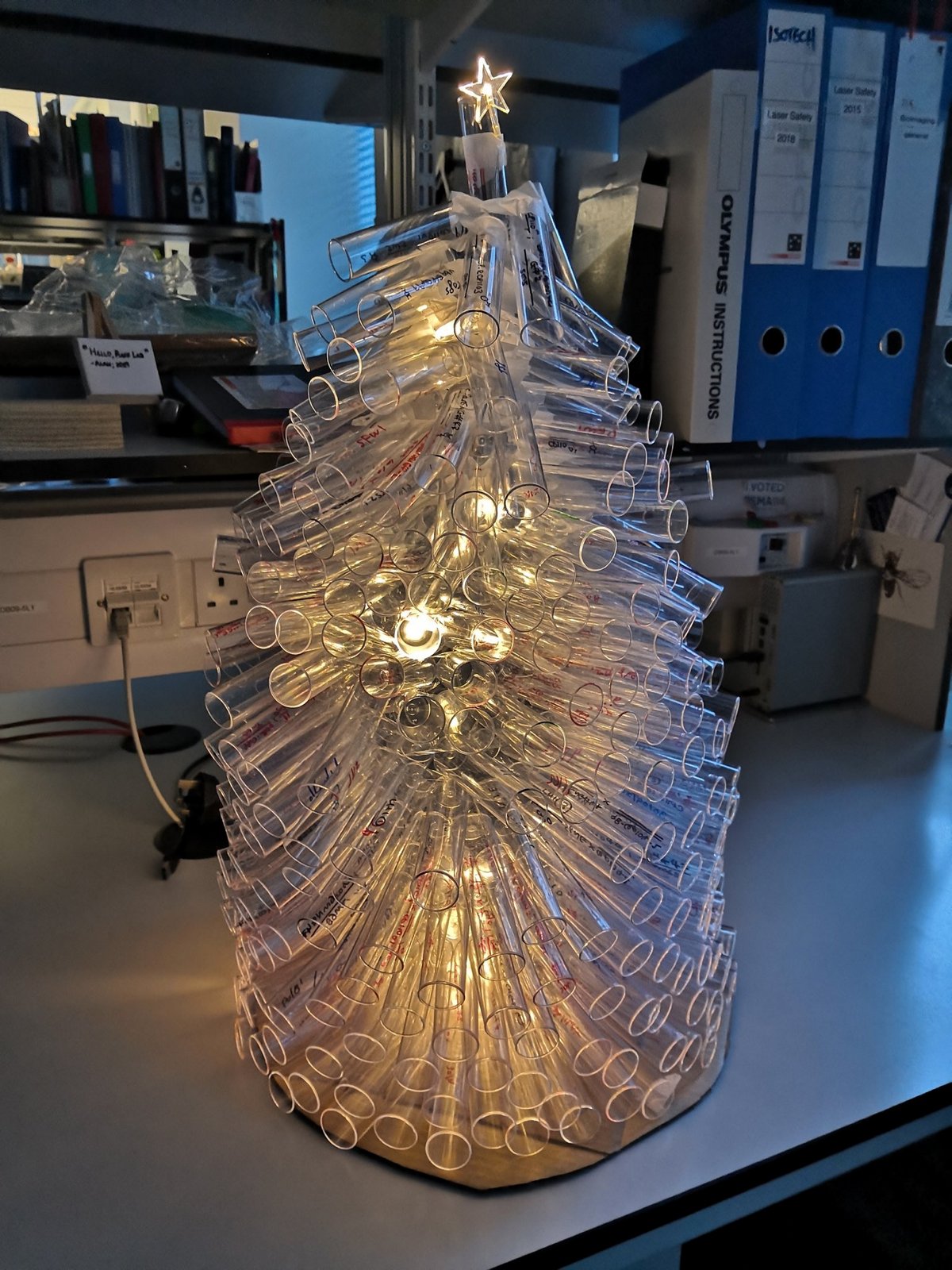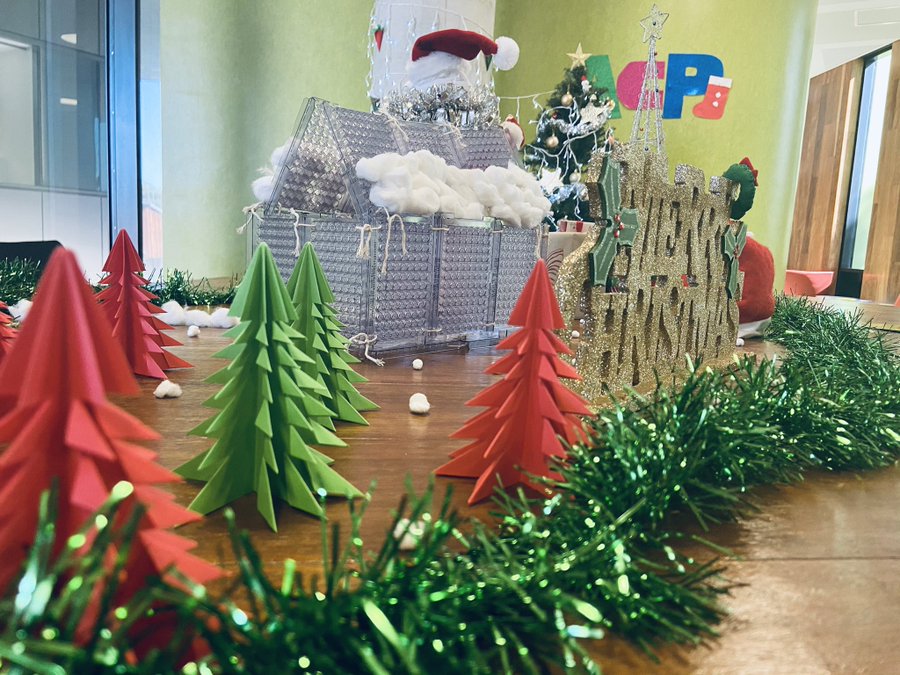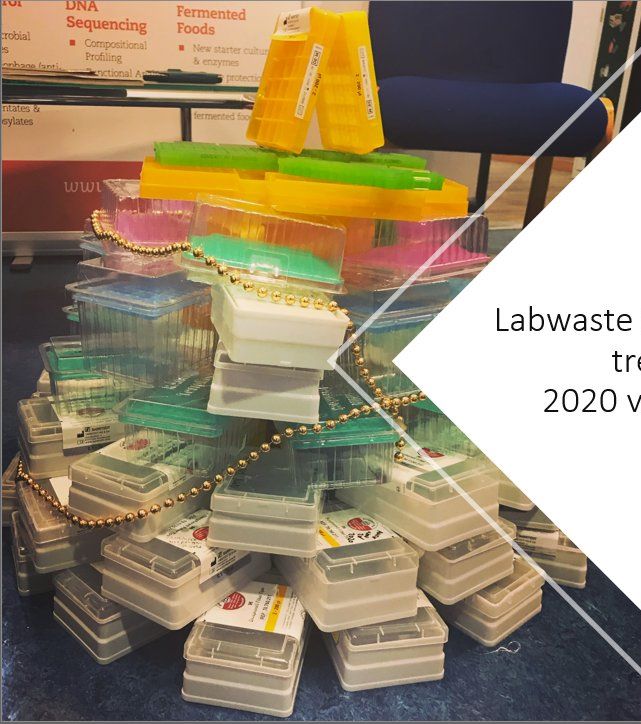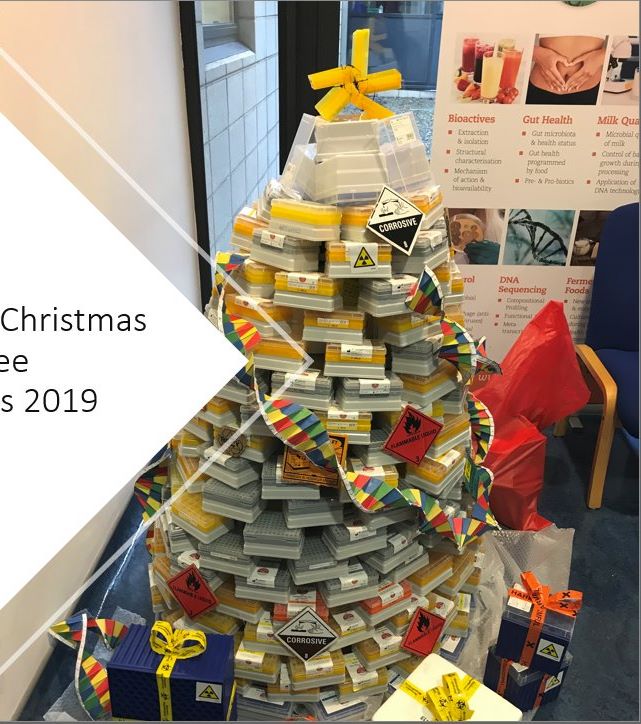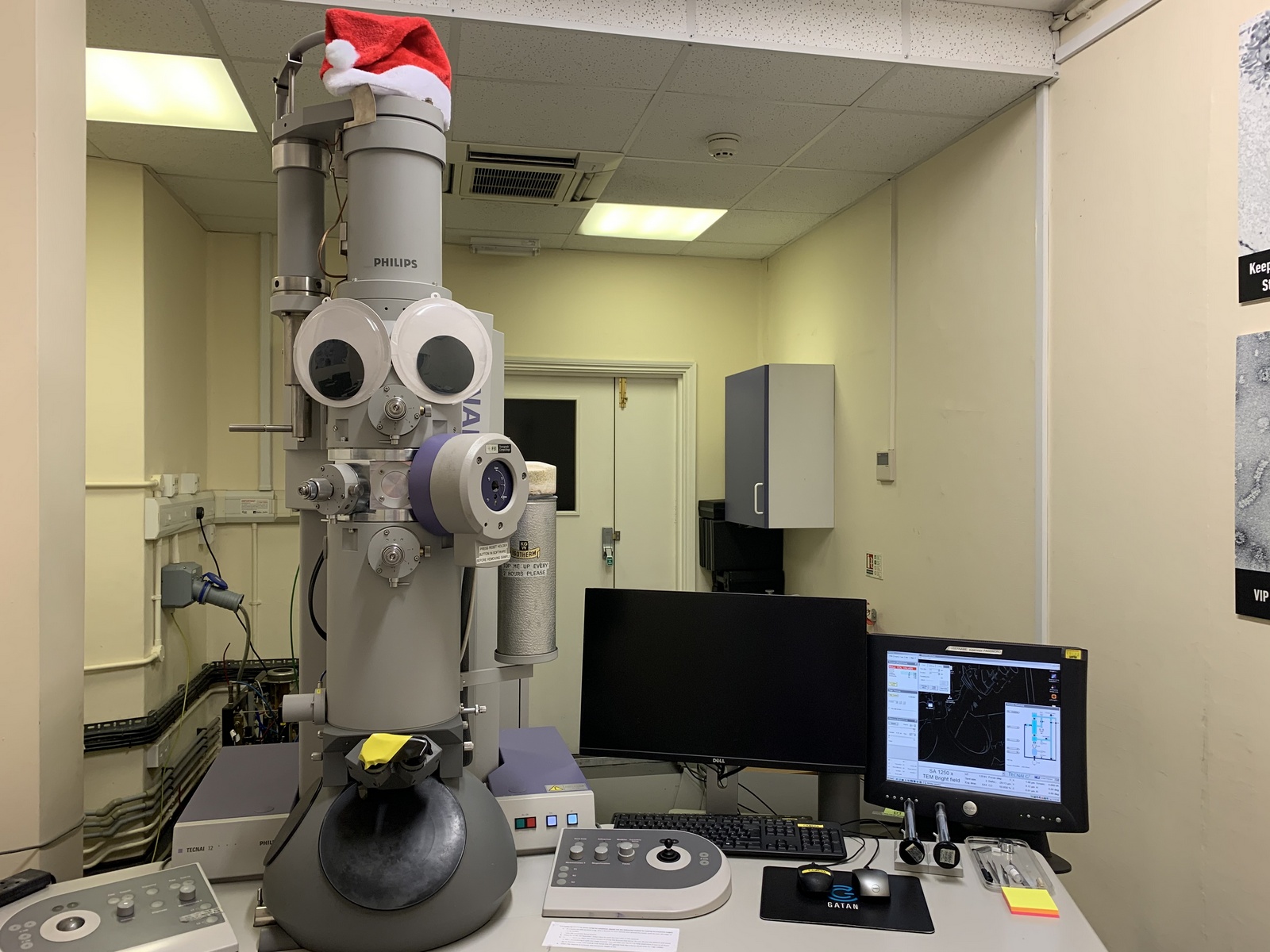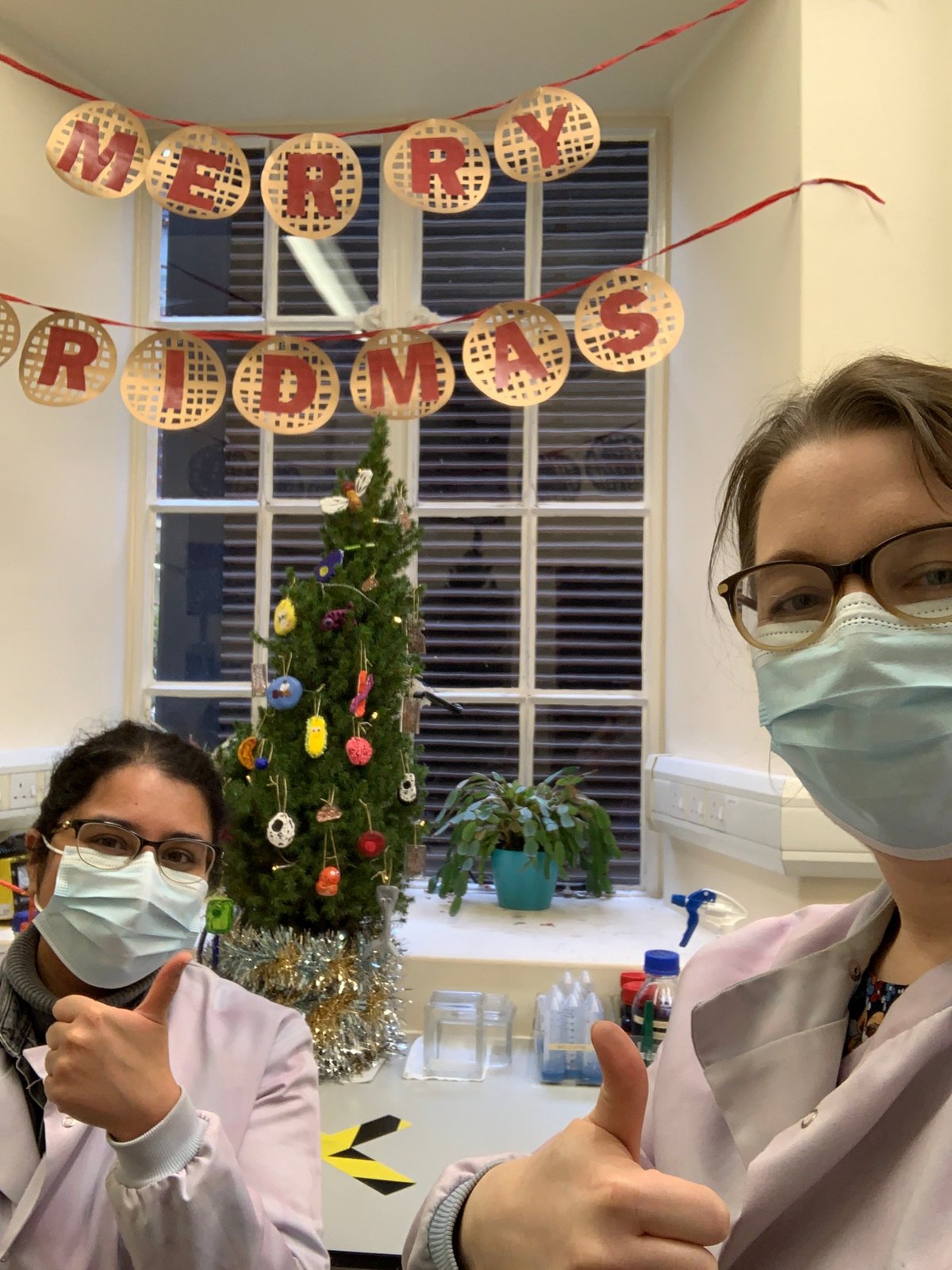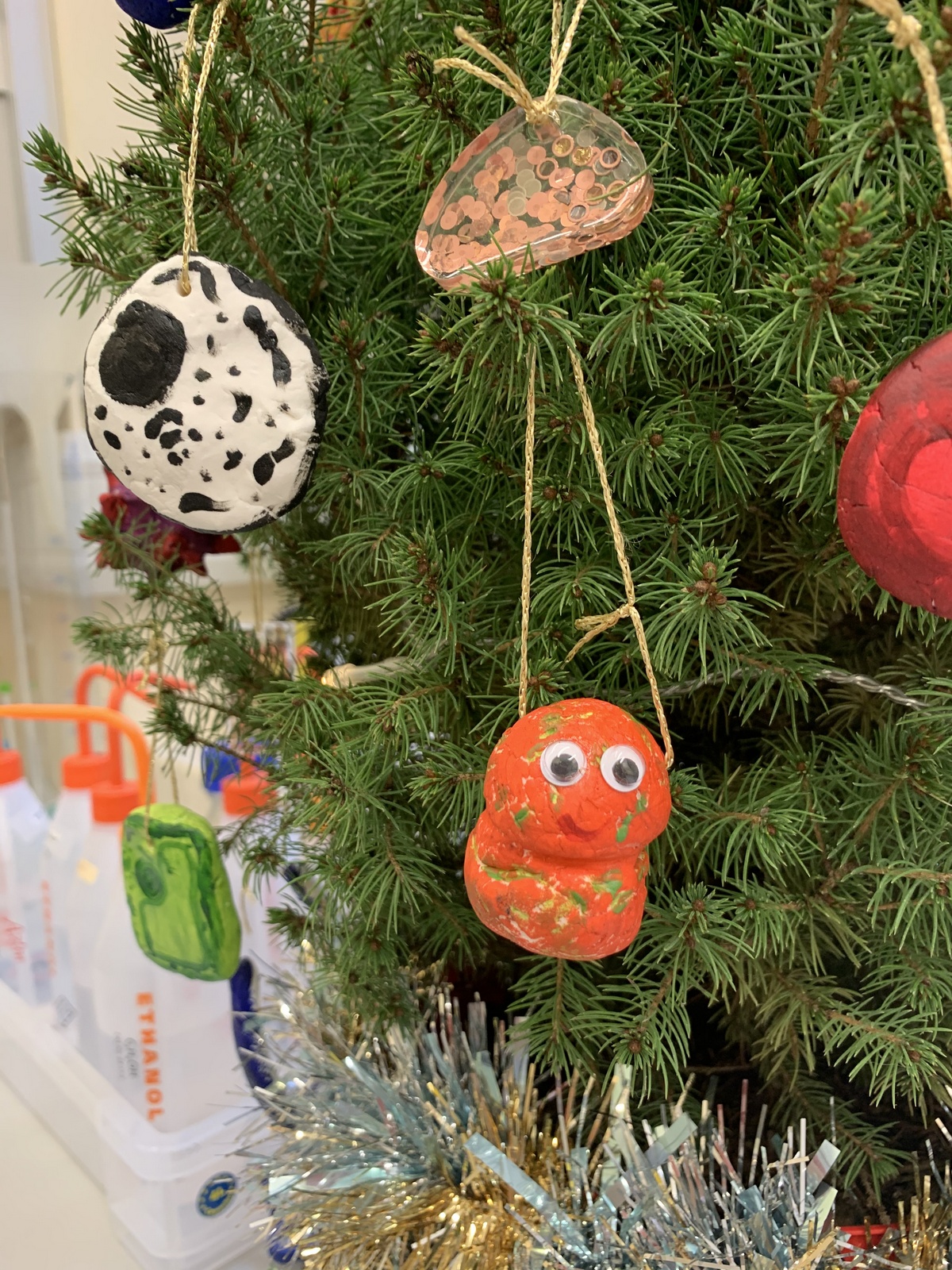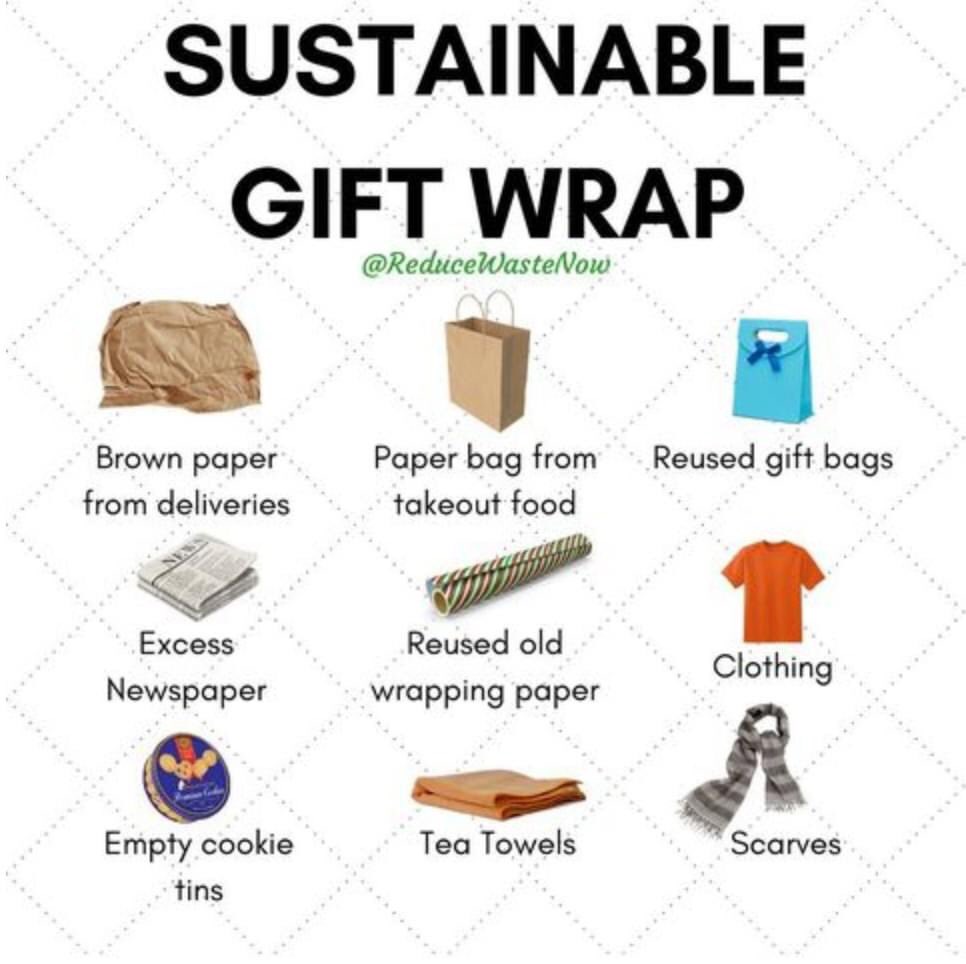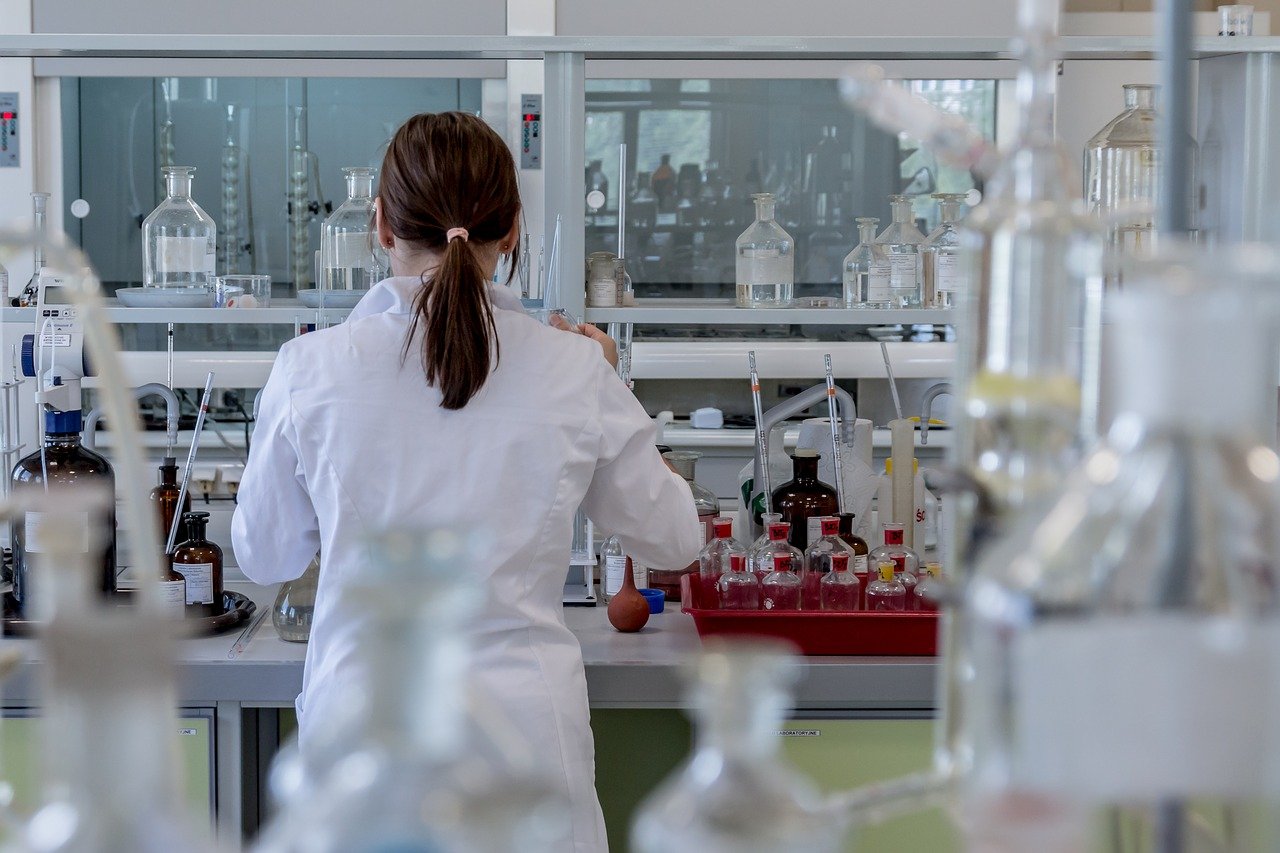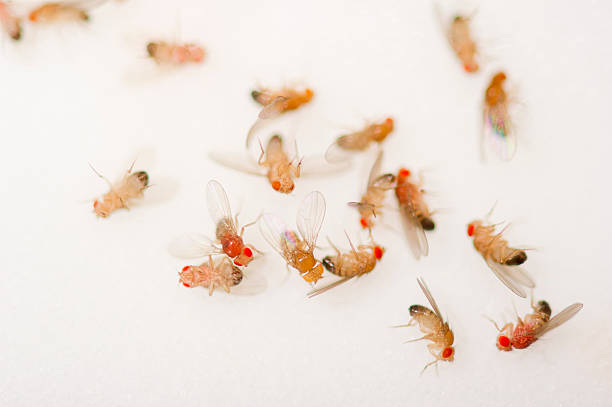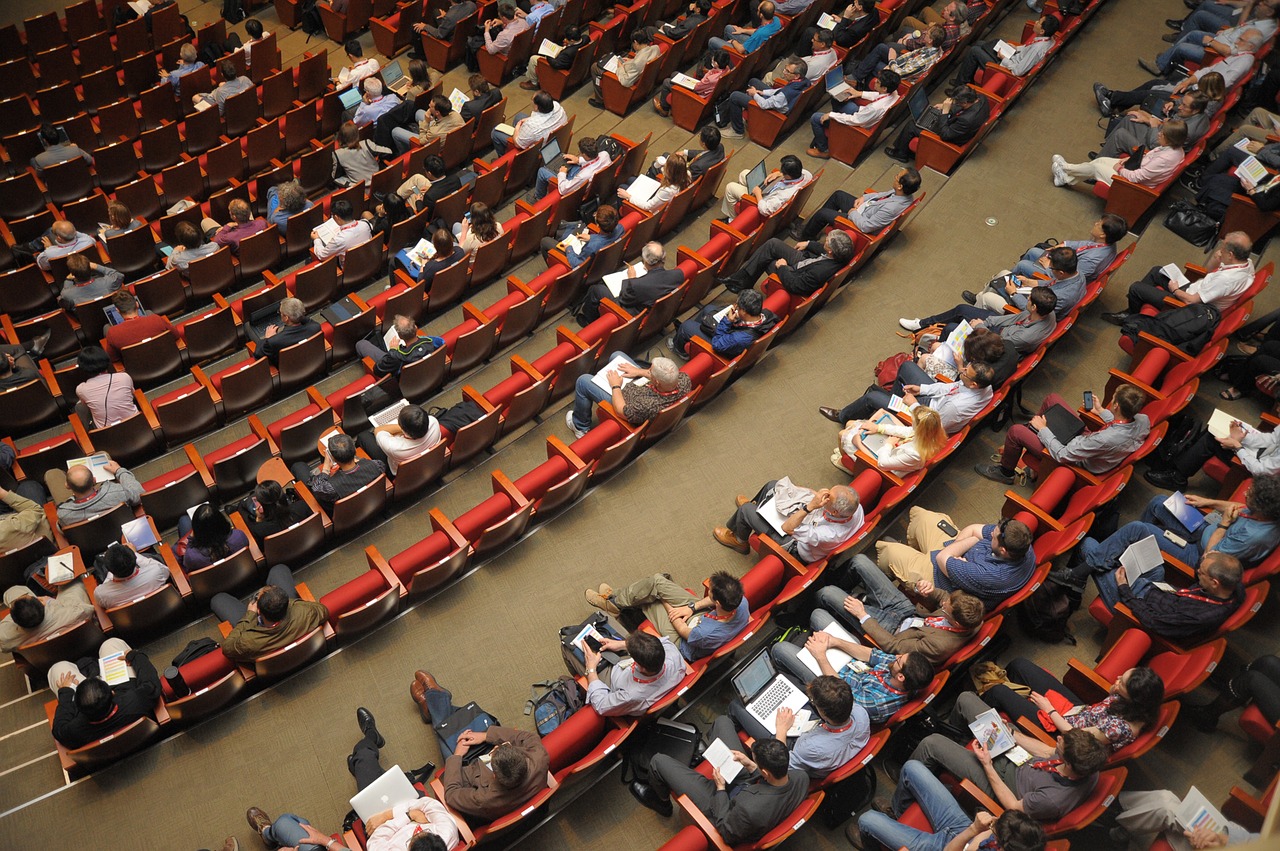
We challenge you to get into the Holiday Spirit without generating more waste. Get creative and have fun!
Here’s a little inspiration from labs around the world:
Amy Fitzpatrick and team at Teagasc have made their tree out of old pipette tip boxes. Their 2020 tree is a bit lacklustre, but that’s because they’ve done a super job at decreasing their pipette tip usage this year. Snaps for putting Green Lab practices to work.
Jordan Raff at University of Oxford presents his lab’s gorgeous reused-fly-vial tree. It catches the light just right.
The Bioimaging Facility (also from the University of Oxford) found a super cute and clever way to reuse electron microscopy resin grids to make their Christmas ornaments.
And who says you need to go shopping to get into the holiday spirit? Take a page from Ben Nicolet from Sanquin by being creative and reuse what you have already. Don't just buy more stuff.
Prof Caroline Ford from UNSW Medicine made a delicious 96-wel lplate house. We love all of these creative decorations using lab refuse.
Green Labs Initiative at the Neuro gives you some ideas to double your joy of Secret Santa gift giving reuse lab refuse.
Let's not waste this Holiday Season. Celebrate and give your lab refuse a chance to fulfil its Christmas destiny.
#SustainableScience for a #SustainableChristmas
